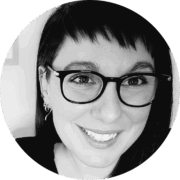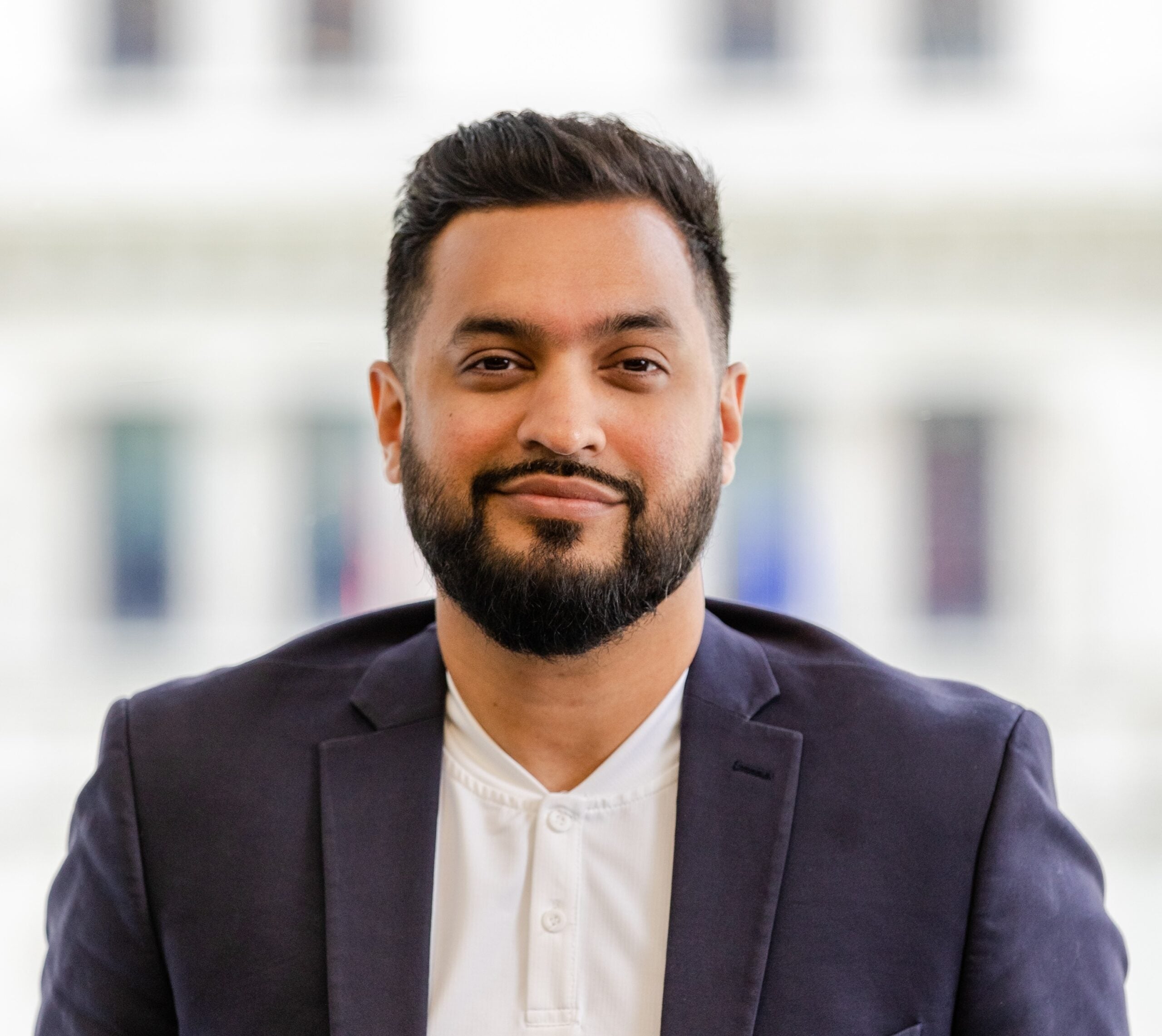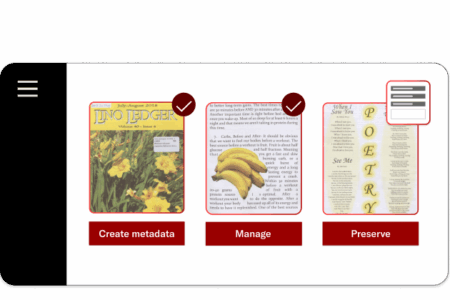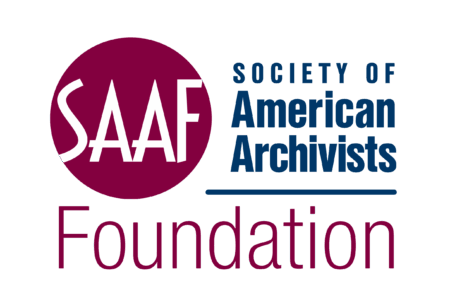Building together: Reflections on JSTOR Seeklight and the 2025 C.F.W. Coker Award
We began developing the technology that would become JSTOR Seeklight not with code, but with conversations. Long before the first technical specifications were drawn up for the AI-powered collections processing tool we have today, we were listening closely to archivists, librarians, and collection stewards.
Insights from the community have been foundational to our work and continue to be essential to our development today.
Throughout 2024 and into the present, both of us—along with colleagues across JSTOR—have engaged deeply with archivists, librarians, and other collection stewards around the world. JSTOR Seeklight, which is foundational to the JSTOR Digital Stewardship Services platform, is the ever-evolving result of this ongoing and collaborative dialogue. As two people with distinct backgrounds—Emilie, an archivist and special collections librarian, and Syed, a product leader in education technology—our own collaboration is a microcosm of what makes JSTOR Seeklight unique: the power of pairing practitioner insight with thoughtful engineering.
This month, JSTOR Seeklight was honored with the 2025 C.F.W. Coker Award for Description by the Society of American Archivists (SAA). That this recognition comes from the very community we’ve worked alongside means a great deal to us both, and points to exciting possibilities ahead. Here, we’ll share reflections on what this award represents and how it reflects the values, collaboration, and behind-the-scenes work that shape JSTOR Seeklight.
Laying the groundwork with listening

Emilie Hardman, Research Lead, Archives & Special Collections, and Sr. Curator, Reveal Digital
In early 2024, after more than fifteen years working in academic special collections and archives, I joined JSTOR to build open-access collections with Reveal Digital. I came to Reveal because I wanted to work differently. I wanted to operate at scale with tools and infrastructure that could extend the reach of primary sources, and to build spaces of engagement for an incredibly broad and big audience. Not long after arriving, I took on a qualitative research project too, which I saw as an opportunity to further my work with and for the field. Unexpectedly, I spent much of that first year on the road, visiting 24 institutions and speaking with more than 280 archival professionals. Alongside my curatorial responsibilities, I focused on trying to articulate the lived realities of a wide range of people working in and alongside archives and special collections today.
Because I’ve done this work myself, I approached these conversations not just as a researcher, but as a peer. That shared grounding made space for depth and candor. Across institutions of all sizes and structures, people spoke with striking clarity about the pressures they’re under—about capacity, backlog, digitization, infrastructure, and the daily tradeoffs that rarely make it into strategy documents. But they also shared what keeps them in the work: the stakes, the relationships, and the abiding belief that these materials matter.
Those voices and experience ultimately shaped both the field report, Bridging Capacity and Care: A Field Report on Archives and Special Collections, and the design of JSTOR Seeklight. As I traveled, I relayed themes back to colleagues like Syed: metadata challenges, digital fragmentation, and the need for tools that support (rather than replace) human expertise.
While I was writing the report, I also contributed archival insight to the development of JSTOR Seeklight itself, helping connect practitioner needs with technical decision-making. This was and remains a unique opportunity to unite insight and action in real time.
As both an archivist and an affiliate of the JSTOR product team, I think often about how bridging perspectives is essential to advancing collection stewardship.
It’s this dynamic—where deep listening meets deliberate design—that makes JSTOR Seeklight what it is. And it’s where Syed and I continue to meet: at the intersection of field realities and product decisions, shaping a tool that stays grounded in both.
Bringing together insights and technology

Syed Amaanullah, Senior Product Manager, ITHAKA
Though I’ve led user-centric product teams for years, our approach with JSTOR Seeklight has been unlike anything I’ve worked on before. Emilie’s fieldwork goes far beyond surveys or user testing, surfacing the ideals and ambitions beneath the pain points, all framed within the ethical, institutional, and cultural context that archival work demands.
Bridging the gap between how things are and how they ought to be defies simple problem-solving approaches. It’s long-haul work, a continuous negotiation as practices evolve and priorities shift.
From the start, we treated practitioner feedback not as background research but as a primary and ongoing design input.
While conversations around AI often center on disruption, our team has been focused on something quieter but no less transformative: alignment. Could we bring the power of AI, practitioner expertise, and JSTOR’s engineering capacity into productive, principled collaboration? That’s been our guiding question.
The result is a layered system that reflects the complexity of archival work itself. First, uploaded materials are intelligently classified (e.g. by file type, content format, layout, and more) to determine the right processing path. Then, AI-generated descriptions are created using tailored prompts we’ve developed to guide the model toward standards-aligned, archivist-informed output. Finally, JSTOR Seeklight’s interface delivers that metadata clearly labeled as AI-generated and easily editable, so human reviewers can refine and approve as needed.
This spirit of responsibility and transparency extends across the entire JSTOR Digital Stewardship Services platform. Because JSTOR Seeklight is integrated with digital asset management, long-term preservation through Portico, and discovery pathways via JSTOR, we’re not just supporting metadata creation.
We’re building infrastructure that connects workflows and strengthens stewardship from intake to access, and measuring impact.
We still have a lot to learn. But we’re committed to learning in the open, in partnership with the field, and in response to real needs. That’s the standard we hold ourselves to, and that’s why this award means so much. It tells us we’re on the right path.
More than a milestone
We’re proud that JSTOR Seeklight joined a distinguished list of past Coker Award recipients. More than that, we see this recognition as an invitation to continue the work: to deepen partnerships, expand what’s possible, and keep listening as we build.
We are especially grateful to the Coker subcommittee–Kayla Harris (chair), Betts Coup, and Aimai Reporter–as well as Awards Committee co-chairs Alexander Duryee and Audra Eagle Yun for their leadership and service in stewarding this recognition process.
To everyone who has contributed feedback, tested a workflow, shared a use case, or raised a challenging question—thank you! This recognition belongs to you as much as it does to us.
We hope you’ll continue shaping what comes next.
Interested in partnering to build values-driven, practitioner-informed AI for archives? Learn more about JSTOR Seeklight and the integrated JSTOR Digital Stewardship Services platform.
Related reading:
- Engineering with purpose: How JSTOR Seeklight combines AI and human expertise to transform digital stewardship by Syed Amaanullah
- Bridging capacity and care: A field report on archives and special collections by Emilie Hardman
About the authors

Emilie Hardman’s career has been centered in special collections and archives with roles at University of Arizona’s Center for Creative Photography as Head of Archives and Digital Strategy, Massachusetts Institute of Technology (MIT) as the founding Head of Distinctive Collections, and Head of Teaching, Learning, and Digital Scholarship at Harvard University’s Houghton Library. Emilie’s academic background is in Sociology with a focus on qualitative methods and sociology of culture.

Syed Amaanullah is a senior product manager at ITHAKA, where he leads the strategic product development of AI-driven solutions within JSTOR Digital Stewardship Services. With over 12 years of experience in leading teams and building innovative ed-tech products, he has deep expertise in leveraging the capabilities of technology to drive meaningful outcomes for the academic community. He is proud to help advance ITHAKA’s mission to expand access to knowledge and education.

